|



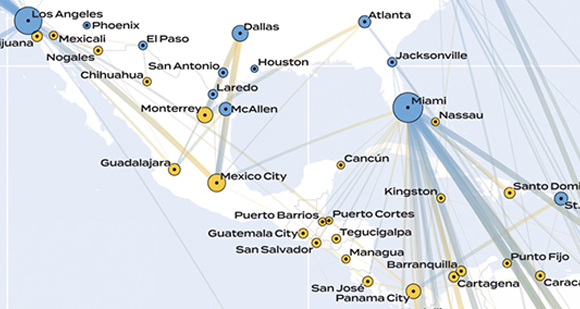 |
A wave of North American reshoring has Mexican exports to the U.S. on
the rise. Judging from the level of hyperscale data center investment in
the country, its information-based economy is rising too.
|
|
|
FROM SITE SELECTION
MAGAZINE, MARCH 2022 ISSUE
|
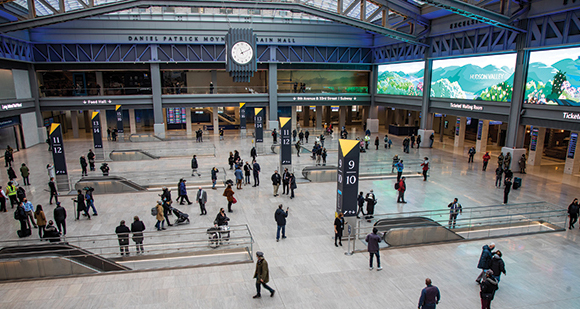
|
NORTHEAST U.S.
A targeted set of 150 projects aims to transform the Northeast Corridor.
|
|

|
CONNECTICUT
Connecticut boosts its Innovation Corridor and the workforce to go with
it.
|
|
|
CONWAY ANALYTICS
SNAPSHOT
|

|
California Life Sciences Employment and Average Wage by Top Four MSAs, 2020
Graphic courtesy of CLS
|
|
California Life Sciences last week released its 2021 sector report, which shows that
California’s life sciences sector directly employed 313,230 people,
attracted $12.5 billion in venture capital and received $5 billion in
funding from the NIH last year. In addition to a focus on diversity,
equity and inclusion in the sector, the report, produced in partnership
with KPMG, includes a heat map showing the concentration of life
sciences employment across the state. The number of life sciences
establishments in the state increased by 3% from 2019. Among other
takeaways:
- “The industry and its supply chain together contributed $411 billion
in economic output and an estimated $42 billion in total tax
revenues to the state economy.”
- Partially due to pandemic effects on this industry like every other
sector, biomedical exports decreased slightly from $26.4 billion in
2021 to $25.8 billion in 2020.
- “As of January 2022,” says the report, “out of all 79 COVID-19
vaccine developments in the United States, more than a quarter have
been sponsored by or primarily supported by organizations in
California and over half of them (i.e. 43) have clinical trials
taking place in California.”
- “The largest metro-area share of the jobs supported in California
was in the Los Angeles-Long Beach-Anaheim MSA, followed by the San
Diego-Carlsbad MSA, the San Francisco-Oakland-Hayward MSA, then the
San Jose-Sunnyvale-Santa Clara MSA. For the entire state of
California, the average life sciences salary in 2020 was around
$159,000, increasing from about $142,000 in 2019.”
Among the nearly 100 corporate facility investments tracked by the
Conway Projects Database in California this year so far are the HQ and
R&D operations of Totus Medicines in Emeryville (60 jobs); a 100-job
investment by ThermoGenesis Holdings in Rancho Cordova; and 41,000 sq.
ft. occupied by the HQ and R&D operations of Vector Laboratories in
Newark. — Adam Bruns
|
|
  |
Ukraine
This project card from five years ago shows the last time Site Selection
documented a major facility investment by iron and steel company
Metinvest at its Azovstal steel mill, the location in Mariupol, Ukraine,
where invading Russian forces as of this morning had pinned down
Ukrainian personnel but were reportedly sealing them off rather than
storming the four-square-mile complex. Metinvest earlier this spring put
its plants in Mariupol and Avdiivka in “hot conservation mode” as the
attacks continued, while a major site in Zaporizhia, which just
celebrated its 88th anniversary last week, began resuming operations
earlier this month and Kamet Steel in Kamianske continued using all
three of its blast furnaces, the company reports. This coming weekend
marks two months since the military invasion of Ukraine was launched.
Updates on its operations and the war continue to be posted several
times a day by Metinvest here.
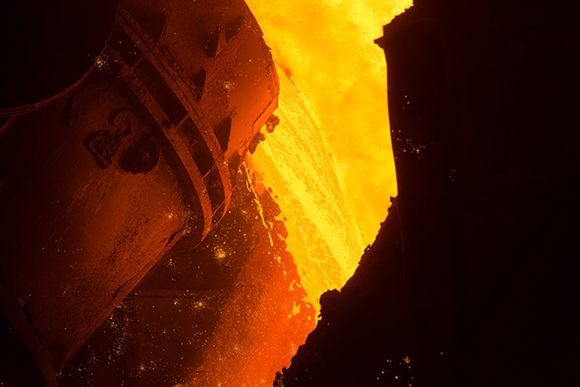
|
|
Under normal conditions Metinvest’s Azovstal Iron & Steel
Works, originally constructed by the USSR beginning in 1930,
produces 5.7 million tons of iron, 6.2 million tons of steel
and 4.7 million tons of finished rolled products per year.
Photo courtesy of
Metinvest
|
Colorado
In a dispatch from a different reality, after successfully returning six
astronaut tourists to terra firma on March 31, Jeff Bezos’ space
exploration and development company Blue Origin is also touching down
with a new office in South Denver’s Highlands Ranch. As of this morning,
the company is looking to fill 223 jobs at the location, which supports
program management, systems engineering, avionics, software, integration
and mission design in support of the company’s launch vehicle and space
systems programs. The company is working with Colorado-based Sierra
Space on a “mixed-use business park” in space they call Orbital Reef.
The company’s other seven U.S. locations include Huntsville, Alabama;
Phoenix, Arizona; Los Angeles, California; Seattle, Washington; the
Space Coast of Florida; and Washington, D.C., as well as its launch site
in West Texas.
|
|
|
KENTUCKY ECONOMIC
DEVELOPMENT GUIDE 2022
|
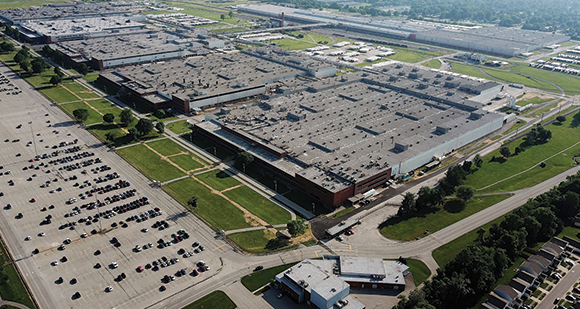
|
MANUFACTURING
Manufacturing facility investments totaling $10.5 billion — including
major projects from GE Appliances, Ford/SK Innovation and Toyota —
accounted for more than three-quarters of the 18,100 new project-related
jobs that landed in Kentucky in 2021.
|
|
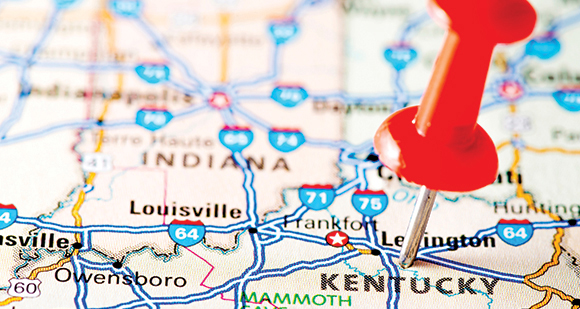
|
DISTRIBUTION & LOGISTICS
An ideal geographic location positions the commonwealth for continued
logistics growth.
|
|
|
SITE SELECTION
RECOMMENDS
|
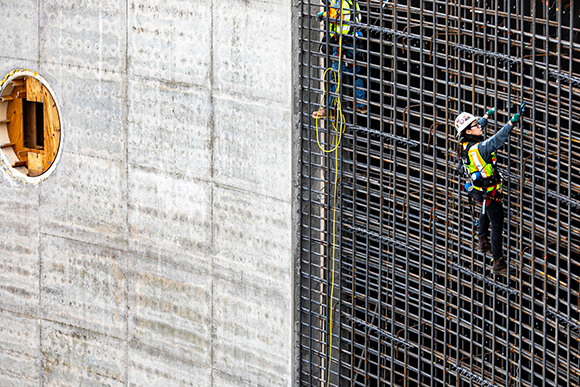
| A
worker gets things done at a Sundt Construction job site in Tucson, Arizona.
Navigating new Buy America rules to keep such projects moving forward is
another matter entirely. |
Photo by Robby Brown courtesy of Sundt Construction
and the AGC’s
Construction Diversity Image Library |
|
|
On April 18 the federal Office of Management and Budget released new Buy America rules (and exemptions) for
projects being funded by the Bipartisan Infrastructure Law. The guidance
applies to all iron and steel, all manufactured products (at least 55%
domestic content) and all construction materials. The rules prompted an
immediate response from Associated General Contractors of America CEO
Stephen Sandherr:
“The Biden administration’s new Buy America mandate is the kind of red
tape initiative that undermines American’s confidence in the federal
government’s ability to effectively use their tax dollars,” he said. “It
makes no sense to place unrealistic limitations on firms’ ability to
source key materials at a time when prices for those products are
skyrocketing and supplies are limited. Supply chain shortages are
already prompting firms to avoid bidding on new projects, as the Army
Corps of Engineers discovered on a recent project that received zero
bids because of concrete scarcities in parts of the country.”
Comparing the waiver seeking process for materials not made in America
to “asking the U.S. Department of Education to verify every child’s
permission slip to miss a day of school,” Sandherr went on to note, “
Whatever minimal gains in domestic construction material production this
new mandate might temporarily generate will be offset by the increased
cost of constructing new projects, slower schedules to build those
projects and the fact some key projects could be hamstrung from moving
forward. Americans were right to be excited about the potential for the
Bipartisan Infrastructure Law to make our economy more efficient, our
commutes faster, our water safer and our economy stronger. But this new
mandate will leave too many taxpayers wondering where the trillion
dollars went while they are still stuck in traffic, still hearing about
boil water orders and still wondering why we can’t have better transit
systems.”
|
|
|
OREGON ECONOMIC
DEVELOPMENT GUIDE
|
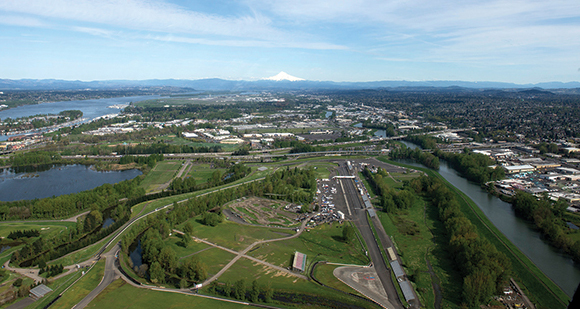
|
LOGISTICS
Among a slew of projects, Amazon’s “Project Basie” in Woodburn leads the
way.
|
|
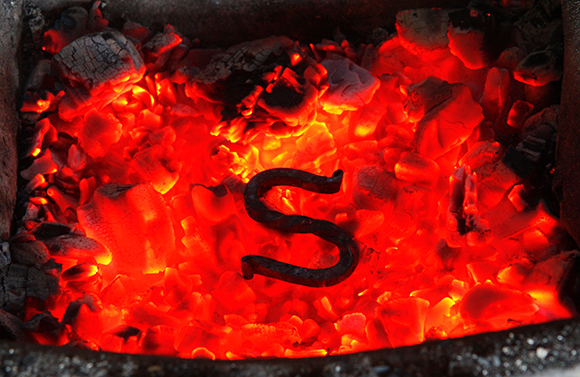
|
Photo courtesy of Saugus Iron Works
National Historic Site and the National Park Service of the U.S.
Dept. of the Interior
|
|
The iron and steel production supporting the Ukrainian economy at plants
like Metinvest’s locations noted above has a historic parallel in many
countries, including the United States. As documented by the National
Park Service, the Saugus Iron Works National Historic Site in Essex
County, Massachusetts, north of Boston, “is a reconstruction of the first
successful, integrated iron works in the New World. It produced wrought
iron and cast iron products from 1646 to approximately 1670, utilizing
the most advanced iron making technology in early Colonial times.”
Saugus is considered the birthplace of the iron and steel industry in
Colonial America, “The subsequent dispersal of former workers and their
descendants to other parts of Colonial America, where they established
other iron producing centers, was critical to the development of
industry and technology in the emerging country,” says the NPS. “The
National Register of Historic Places calls the Saugus lron Works ‘the
first chapter in America’s book.’ With its requirement for a large labor
force, the iron works served as a conduit, fowarding the movement of
technology and people from the Old World to the New. Through the
experiences of Puritans, English freemen, and Scots prisoners engaged
for its operation, the iron works traced the British immigrants’ journey
in the New World and recorded their stories of assimilation.”
|
|
|
|

